Painters: Chattie Salaman to Henry Tuke |
||
Chattie (Charlotte) Baldwin Salaman [née Wake, 1875-1972] Though not at the Slade with Michel and his cohort it was at a fancy dress party that she met him. Her long-established English family were apparently reconciled to her marrying an un-known painter, and a Jew, by his wealth. I have never seen any of Michel's paintings, but it is sad to think that the artist of this charming self-portrait, and the stylistically different one of her brother-in-law, should have been stopped from painting as Michel considered that neither he nor she were as ‘good’ as Augustus or Gwen John. |
||
Self portrait Pastel, c 1906 (pastel), mother of six children including the artists Michael and Merula (Lady Guinness). Bridgeman Art Library. Chattie Salaman’s self-portrait, perhaps more than any other on this site, highlights the problem for me of what constitutes a missing portrait. It has been exhibited and reproduced*, but I have been unable to find where it is. How many people, the owner apart, have to know where a object is for it not to be missing? To a lesser extent the same applies to the portrait of Chattie by Augustus John, to be shown shortly on this site, under Painters E-K. *The Salamans, a family of painters (1997). |
||||
Abraham Solomon [1823-62] Abraham Solomon, RA, was the elder of the three Solomon painters. From 1856 he shared a house at 18 Gower Street with his sister Rebecca [below] and their brother Simeon. Rebecca, the least well known of the three, painted the portrait the portrait of Myer Salaman (1852) which was my first Orphan of the month. More information about her is immediately below, and at the foot of the entry is a link to a little-known biography of Simeon. Abraham’s work is too well known to need further description here. |
||
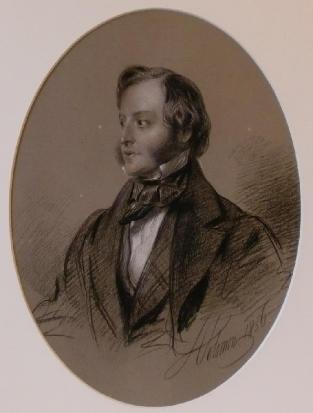 |
Arthur Green [fl 1847-c 1904], 1856 Some people have more luck than others: this portrait was found for sale, only recently, for just £49! If the style of this portrait by Abraham seems very similar to Rebecca’s earlier portrait of Myer it is probable because not only was Rebecca taught by Abraham, but she also worked as a copyist. Lionel Lambourne wrote of her in 1968 ‘she exhibited several paintings of genre subjects that greatly resemble Abraham’s work’, albeit describing a different genre. He was made an RA on the day he died in Biarritz and, rather acerbically, Simeon Solomon later said he did not think the two events were necessarily correlated. Of the possible Arthur Greens, it is most likely to be of the architect, who appears to have died in 1904. He worked with his partner Thomas Archer on many buildings in the 1870s and 1880s including Whitehall Court and the interior of the Cafe Royal. He may even have met Abraham at the Academy Schools. Arthur’s son, Leslie Green, was the architect of several London Underground station buildings. In one of the many coincidences that abound on this site, Leslie Green [1875-1908] must have worked with the rather younger Delissa Joseph, on the now-disused Hyde Park Corner station (today a Pizza Express) and perhaps Tottenham Court Road which was only recently knocked down to build CrossRail. Leslie would have designed the ground floor while Delissa had the franchise to build offices, flats and hotels above many stations. It is perhaps worth noting here that this photo is from the original, while that of Myer is reproduced from a photoprint of uncertain age. Courtesy of Scott Thomas Buckle. |
|||
Rebecca Solomon [1832-86] Rebecca was the middle child of the three artistic Solomons, and there were five other Solomons. Her brother Abraham became an RA, but her younger brother Simeon was the best known and it is now hard to tell if this was because he was the only Jewish PreRaphaelite, or because of his subsequent arrest for a homosexual offence—from that point on he effectively became a non-person. However, his work did not always please The Times. Their artistic careers are too well described elsewhere (and especially at the Simeon Solomon Research Archive) for me to to do so here, but Rebecca is the least well known. The sympathetic sketch of her first cousin below, my great grandfather Myer Salaman, seems to have vanished into oblivion and I have chosen to make it my first Orphan of the month. A contemporary writer described her thus: ‘Rebecca Solomon was born in Bishopsgate Street, City, of Jewish parentage. Her brothers Abraham and Simeon were artists of good reputation. Miss Solomon went to the Spitalfields School of Design, afterwards being the pupil of her brother Abraham. This brother died in December, 1862, at Biarritz, Pyrenees, of heart disease—a disorder to which artists seem peculiarly liable. The Royal Academy was the first place [my italics] where Miss Solomon exhibited. She has painted and studied a good deal in Italy and France. Many of her original works have been engraved in the Illustrated London News. She has painted the portraits of several well-known persons, and made many copies from the old masters as commissions. Her principal pictures have been:—“Behind the Curtain’, in the possession of the Baroness Burdett Coutts; “Roman Wedding Party”, painted in Rome, for the Baroness; “Peg Woffington” [(1720-1760), an Irish actress in London], in the possession of Charles Prater, Esq; “Fugitive Royalists”; “Arrest of a Deserter”; “The Princess Elizabeth in the Tower”; companion pictures from the fable of “The Lion and the Mouse”; “The Duchess of Devonshire canvassing for Votes”, in the possession of Sir Francis Goldsmid. Also copies of pictures by John Phillip, Frith, Millais, Faed, and others. One copy, in the possession of the Queen, is “The Marriage of the Princess Royal”, from the picture by John Phillip.’ From English female artists, Ellen Creathorne Clayton. London, 1876. As comparatively little is known about her I have also included a near-contemporary description of Simeon and Rebecca from Murray Marks and his Friends, George Charles Williamson. London, 1919. |
||
Myer Salaman [1836-96] For his biography see Sitters S-Z and Orphan of the month. |
||||
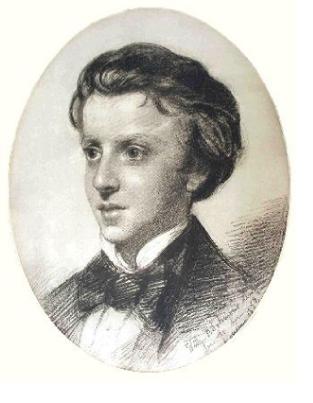 |
||||
Solomon J Solomon [1860-1927] Perhaps the most prominent Jewish artist of the period, he it too well documented to need a biography here even if he is no longer in fashion. The Tate have his painting A Family Group: The Artist’s Wife and Children: ‘Papa Painting!’ of 1905 and other works are in the Walker, Liverpool, the Ben Uri in London while the NPG have 12 of his portraits, including a self-portrait. As well as including Jerome K Jerome in this group he painted a portrait of him in about 1889, now in the NPG. He also did important work in World War I on the development of camouflage. He became president of the Royal Society of British Artists in 1919. Exceptionally, given the number of ‘sitters’ in Your health I have not given them individual entries on this site. His sister was Lily Delissa Joseph. Your Health by Solomon J Solomon [below] was illustrated in Royal Academy pictures, 1894. ‘In this picture the artist has sought to solve the problem of lights and reflected lights at a dinner party table, and, while rendering all the accessories, to subordinate them, even though they are in full light, to the faces which are for the most part in shadow. Mr Solomon has introduced a number of portraits which it may be of interest to enumerate’. The Jewish Chronicle for 5 May 1893 wrote: ‘In spite of the usual hackneyed cry that the exhibition of this year does not equal its predecessors, there is little doubt that in the Academy of 1893 there is much interesting and meritorious work … To Mr Solomon J Solomon, as usual, fall the principal honours among co-religionists; indeed he is the only Jewish artist who exhibits any work of great importance, though there are several minor canvases of fair merit of which we shall speak later. The two portraits of Mr William James Armitage and Mrs Armitage are exceedingly strong in treatment and possess all the qualities essential to successful portraiture, but the main interest centres in his large work ‘Your Health’, which bids fair to be regarded as one of the pictures of 1893. The scene is a gay dinner party, the snowy napery, and gleaming silver shown up to the soft light of a rose coloured lamp and candles; the lamp light also plays on the forms of the smartly dressed ladies who are pledging the health of the honoured host. Is it in defiance of conventional superstition that Mr Solomon has arranged just thirteen guests at the table, or is it possible that the square shade of the lamp conceals a fourteenth visitor? The servants move about noiselessly refilling the glasses, and all faces are turned towards the host, Dr Ernest Hart [editor of the British Medical Record], who in the picture is seen from the back, but the profile and the characteristic head render recognition of the gifted medical authority an easy task. It is not difficult either to fit names to the other faces gathered round the festive board. Mr Jerome K Jerome surveys the scene through his glasses as he stands in the rear, from beneath the lamp Mrs J Solomon, mother of the artist, directs all a smiling glance at the host, Mr Arthur Hacker, the artist, is not far from Signor Tosti [conductor, singer and song writer]; Sir Benjamin Baker [engineer of the Forth bridge], Mr Forbes Robertson [the actor], whose clear cut features come out particularly well, Mrs Arthur Raphael [probably of the banking family], Prince Troubetzkoy [painter and sculptor] and his gifted fiancé, Ethel Wright [also a painter], and others serve to complete the group, and it is curious to contrast the different expressions where each is offering the same form of congratulation, “Your Health”.’ The Jewish Chronicle seem to have omitted a Miss Goetze from the list. An expert on SJS says that she has always assumed that this painting was ‘lost’: given its size of 96 x 57 ins [244 x 145 cm] destroyed might seem more likely. |
||
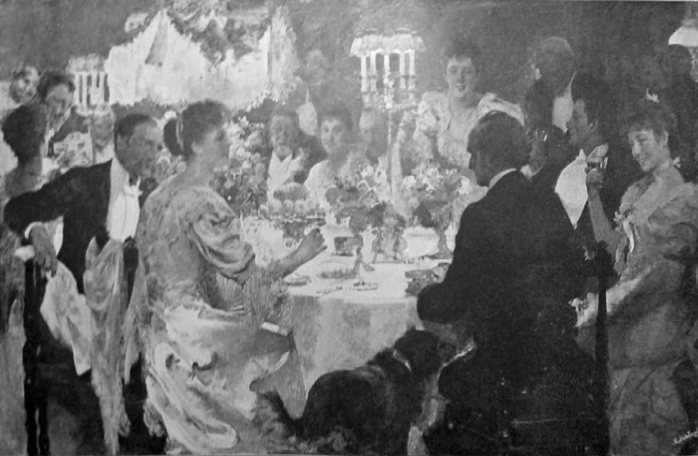 |
||
Leon Sprinck [fl 1890-1925] A minor Russian-born portraitist, he exhibited in London in the 1890s. He also painted of a portrait of Viscount Castleross, Earl of Kenmare as a boy, 1906, of Lady Baden-Powell in 1910, Interior of a pub in Chelsea, 1925 and Portrait of Lady Dundas in a green dress, 1916. He wrote A Guide to Pastel Painting, London. 1st edn 1890, 12th edn 1922. |
||
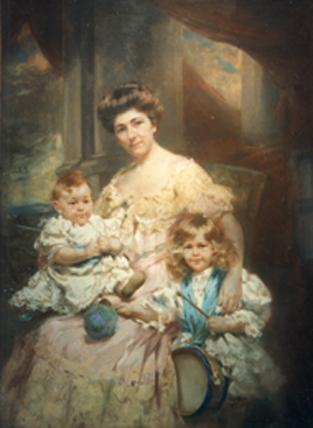 |
||||
Mrs Elkin [Florence] Salaman and her two sons Pastel on canvas, 152.5 x 111 cm. The portrait of Florence Salaman was given to the West Valley Art Museum by Florence’s daughter Auriol [b 1912]: they also had a portrait of her husband Elkin. ‘As a point of contrast, Leon Sprinck’s portrait of Florence Salaman and her children is as sweet and gentle a depiction as you could ask for. Another time, another society, and another world altogether’. George Palovich, curator, West Valley Art Museum, Surpise, AZ, 2009. However, the museum closed in September 2009 and lost its building in December, the painting having already been sold in 2008. |
||||
Henry Scott Tuke, RA, RWS [1858-1929] A West country painter of male nudes, seascapes and ships, he was a great friend of Alfred de Pass who bought much of his art in his life and the greater part of his studio after his death. De Pass gave them away, stocking several local collections with Tukes. Not well-known today, in his life he was a highly-sought after portraitist. Among many others beside de Pass, he painted sporting heroes such as the cricketer W G Grace. Tuke and de Pass were both keen sailors, Tuke owned a string of boats, ending with a Sunbeam, a design first seen in1922 and still being built today. Flamingo, a locally built 6-ton cutter which was racing for 30 years or so first carried topsail when crewed by de Pass and its builder, and won the RCYC regatta in 1909. De Pass bought a Dartmouth steam launch, and later commissioned Thomas Jackett of Falmouth to build an 18-foot racing yacht named Myrtle (1901) after his daughter Myrtle: there is a photo in the Tate archive of Myrtle and Tuke on board; she looks more like 18-foot in beam than in length, and if she could easily sail the Atlantic. |
||
Alfred Aaron de Pass [1814-1877] This portrait, was reproduced in A History of the Jews in South Africa from the earliest times to 1895 (1935). |
||||
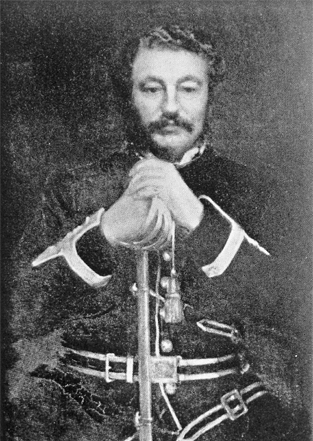 |
||||

